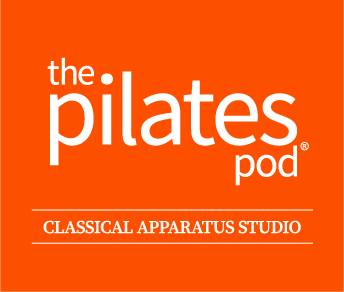
Taking care of your pelvic floor is essential for overall health and well-being. Before we look at some top tips to maintain a healthy pelvic floor, let’s first understand the anatomy and function of the pelvic floor.
What is the pelvic floor?
The pelvic floor refers to a group of muscles and connective tissues that form a supportive hammock-like structure at the base of the pelvis. The pelvic floor is a complex structure composed of several layers of muscles, with one layer running from side to side (between sit bone to sit bone). The other layer runs from back to front (tailbone to pubic bone.)
These muscles work together to provide strength and support to the pelvic region.
What is their function?
- Properly functioning pelvic floor muscles are essential for controlling the release of urine and feces. Dysfunctional pelvic floor muscles can contribute to issues such as urinary incontinence and fecal incontinence.
- They support your growing baby inside the womb during your pregnancy and assist with the natural delivery of the baby birthing. Strong but flexible pelvic floor muscles with good endurance will not only be able to push the baby out and sustain the length of time needed to do so but also have no impact on the body afterward as a result of delivery, such as tears.
- They contribute to sexual function and arousal.
But what if things go a bit wrong?
Dysfunction of the pelvic floor muscles can occur either too much or not enough tension on the pelvic floor muscles.
Pelvic floor dysfunction can be genetic. Some people have weaker muscles and connective tissue.
However, it can also be caused by other things, including
- An injury to the pelvis
- Surgery in the pelvic area
- Aging
- Being overweight or obese
- Pregnancy and childbirth
- Heavy lifting /heavy weight training
- Running
- Using the bathroom too often or straining too hard when going to the bathroom.
The most common causes in women are pregnancy, aging, and being overweight.
If you were pregnant and did not deliver your baby vaginally, you can still get pelvic floor dysfunction due to the pregnancy itself.
Shifts in hormones as we age due to menopause may lead to weaker or stiffer muscles in the pelvic floor. Connective tissues become more rigid and provide less support.
Since your nerves control your muscles, people with neurological disorders like Parkinson’s disease may also experience pelvic floor issues.
The symptoms of pelvic floor dysfunction include:
- Difficulty urinating or having bowel movements
- Feeling like your bowel movements are not complete
- Leakage of urine or feces
- Frequently feeling the need to use the bathroom (urge incontinence)
- Feeling like you need to force out urine or feces
- Stopping and starting in the middle of urinating
- Long-term constipation
- Needing to change positions to get out a bowel movement
- Painful urination
- Unexplained lower back pain
- Unexplained pain in your genitals, anus, or lower abdomen (pelvic region)
Do men have pelvic floor muscles?
Simply- yes!
The issues that men face with their pelvic floor may not be a result of pregnancy, childbirth, or menopause. However, they can still be caused by the other reasons we mentioned above.
Men may experience dysfunction as:
- Leaking urine with activity, for example during running, jumping, coughing and sneezing.
- A sudden and urgent need to pass urine.
- Leakage of stool from the back passage.
- Erectile dysfunction (the pelvic floor helps you to maintain erections).
It’s more than just weak!
Even though you may be experiencing symptoms associated with pelvic floor dysfunction, don’t just assume it’s because the muscles are too weak!
We often find the issue in the pelvic floor lies in dysfunctional breathing. We’ve lost the ability to breathe well and instead have short, shallow breathing. In this day and age, it’s a growing issue to see people having problems with their pelvic floor from being overactive. This is especially common amongst the younger generation, fitness go-ers, personal trainers, those with anxiety, and busy people rushing around.
Many of us only exercise at higher intensity, doing cardio, spinning, ab work, HIIT, and lifting weights. The same people also tend to find it hard to relax their abdominal wall, worrying about the appearance of letting it all hang out! It’s constantly walking around with the abdominal muscles pulled in, leading to a more permanent “on” button for the abdominal wall and pelvic floor. The muscles never relax and lengthen, so they become overactive and overly tight, which is ineffective for them, or the lower back, diaphragm and glutes.
A strong pelvic floor is essential to support your pelvic organs and control your continence and bowel movements. It’s also important that you relax these muscles so that you can have sex comfortably and empty your bladder and bowel correctly.
Misdiagnosis
The pelvic floor comprises muscles, and when these muscles are in spasm, they can refer pain upwards and even downwards.
When they are too weak and not supportive from underneath the pelvis, they give less support to other areas that connect to the pelvis, like your abdominal wall, the diaphragm, hamstrings, glutes, obliques, and lower back. The pelvic floor muscles also play a role in stabilizing the spine.
However, because of the weakness or referral pain sometimes felt in the back, it’s often misdiagnosed as lower back pain by doctors who are unaware of the pain referral patterns of the muscles. It’s always best to think of the pelvis as a whole from above, below, front, sides, and back.
Plus, it’s always worth having a complete MOT check-up from a women’s health physio.
In Hertfordshire, we recommend the following women’s health physios for a diagnosis and assessment:
- Helen Mellersh, Nascot Therapies
- Becky Sessions
- Bally Lidder of Lidder Therapies
- Aby Tobin of Carter & George
- Becky Aston
